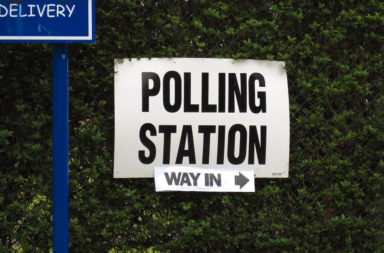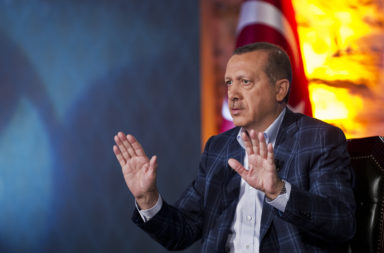Despite frequent past calls to disengage from Afghanistan after 16 years of US military involvement, President Donald Trump now has a strategy of continued engagement.
“My original instinct was to pull out”, he said on August 21 at the Fort Myer military base in Arlington, Virginia. But “decisions are much different when you sit behind the desk of the Oval Office”.
Though short on details, the plan includes increasing US troop presence by 50% and bolstering the capacity of local armed forces and police, from front line troops to central command posts. Trump said the US will also get tougher on Afghan corruption and on Pakistani support for insurgents and will remain in Afghanistan as long as conditions require, with no set end date.
On its surface, this plan hits a lot of important marks for creating a stable and peaceful Afghanistan, but as an expert on the country and on international intervention, I also retain grave doubts about its sustainability and feasibility.
Staying the course
Proponents of radical change will likewise be disappointed. For Erik Prince, brother to US Education Secretary Betsy Devos and founder of the notorious private-security firm Blackwater, the war should be privatised.
The former West Wing advisor Steve Bannon agrees, and from his restored podium at Breitbart News he is now accusing Trump of “flip-flopping”.
MIT professor Barry Posen, like Trump in his past life, believes that the US should withdraw entirely, leaving Afghanistan to cause headaches for American enemies and rivals alike.
Retreat would be either cynical or dangerously off-target. Since 2001 the US has aimed to build stable Afghan institutions resilient enough to prevent the country from returning to its pre-September 11 2001 status as the ungovernable host of international terrorists.
A pullout would surrender this ambition, disregard the fate of the country’s citizens and, most likely, usher in a power vacuum that would haunt the world.
Afghanistan is not on the brink of renewed Taliban dominance.
However, India is poised to go from soft power to hard power. India is investing more in Afghanistan than Pakistan is, including by offering more funds for development, yet to date it has kept its political profile low and restrained its export of arms.
But India will almost certainly flex its muscles if the US pulls out of the region while Pakistan continues its covert policy of stoking insurgency to gain political control.
Threats to Afghanistan’s future are plentiful – inside and out. The US is poor at regional strategy, India has great, unrealised, potential and Pakistan is fearful.
In Afghanistan, nationalism in the country’s largest ethnic community, the Pashtuns, could fuel new conflict if outsiders keep undermining government authority.
Wasted resources
Doubling down on capacity building does merit this warning, though: the present strategy has largely failed to meet the lofty promises of the 2006 Afghan Compact and ensuing 2008-2013 Afghan National Development Strategy. Enormous resources have been wasted over the past 15 years.
First, after knocking out the Taliban (temporarily, as it turns out), the Bush administration, along with NATO allies and other international partners, endeavoured to build a new, democratic Afghanistan in record time. But they didn’t know where to start nor how to sustain that effort.
By 2008, when president Barack Obama took office, it had become clear that this campaign was disconnected from reality. Obama added troops, advisers, and cash flows to secure the country, but he also wanted out. His administration’s strategic narrative of “transition” never really reflected conditions on the ground.
Trump, steering clear of this urge to retreat, has defined one clear priority: support the Afghan people who control the arms – the military and police top brass, plus their political masters.
Ultimately, the goal, it seems, is for a core of Afghan elites to begin acting in the public interest, rather than for private gain, and to empower Kabul so that the Taliban will come to the table for reconciliation talks that might bring Afghanistan’s long civil war to an end.
Patience as a strategy
Elites can emerge in different ways. One path is to build up liberal democratic institutions and encourage civil society to grow and propel accountable leaders to the top. This was the international community’s strategy in Afghanistan since day one, and the outcome has been disappointing.
The international community has paid insufficient attention to another path, state-building, which is not incompatible with liberal institutionalism (if executed with patience and diplomatic skill). Elite power-sharing followed by investment in security ministries could work in Afghanistan.
But this requires US decision-makers, diplomats and military leaders to build relationships with foreign elites to draw them into public service, and to do so for the long haul, skills that don’t seem to be among Trump’s strong suits.
Since the US-backed president Hamid Karzai left office in 2014, Afghani government power has in effect been shared between the president and prime minister. This was a welcome change from Karzai’s absolutism, but power sharing has also proven politically explosive and the divided state has not served its people well.
Drawing high-level defence and police officials into a role as guardians of the public interest – where their allegiance first and foremost is to the state and not their tribe or family – is a necessary but complicated next step. The US and others are already investing in this area, but here, too, unresolved power balancing among ethnic groups spills over and complicates their work.
To turn a dispersed and fractious collection of elite players into a team capable of governing a nation, the US must engage not just Afghanistan’s government and military but also its warlords. Their violent history and disregard for the rule of law may seem objectionable, but without them power sharing in Kabul will come to naught.
I am not convinced that Trump can deliver on all of this. His speech was clouded by America First politics (“India makes billions of dollars in trade with the United States”) and Trumpian bravado (“We are not nation-building again. We are killing terrorists”).
What the US strategy is still missing is the connection between American interests and those of Afghanistan, India and Pakistan, whose elites essentially want to see power distributed in their capitals. US National Security Advisor H.R. McMaster, Secretary of State Rex Tillerson and Secretary of Defence James Mattis are all capable of this kind of real geopolitical thinking.
But if their president is not, they will fail in Afghanistan, too. Trump has stabilised the canoe in Afghanistan, but now he needs to paddle.




